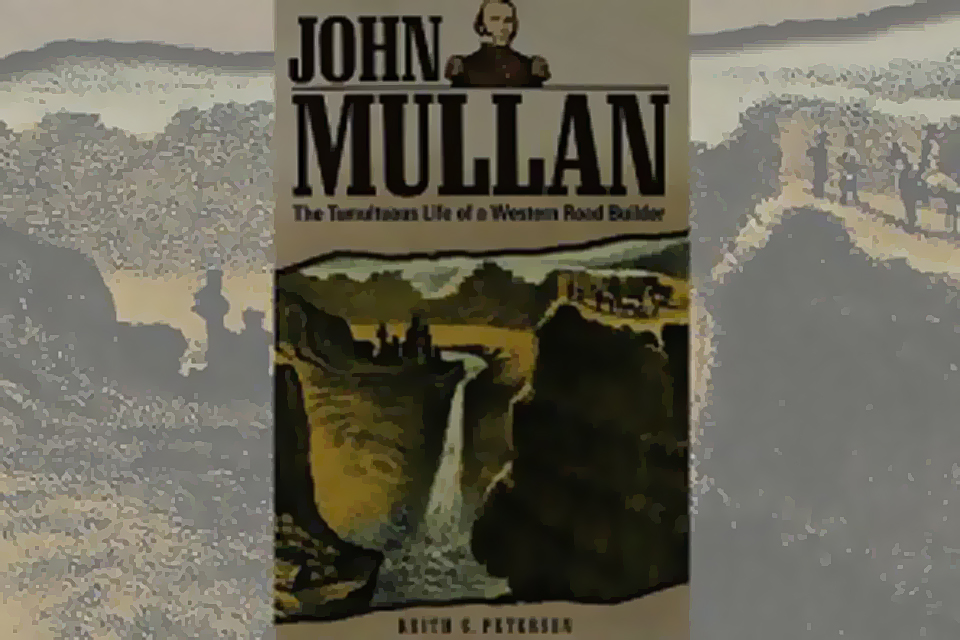John Mullan: The Tumultuous Life of a Western Road Builder, by Keith C. Petersen, Washington State University Press, Pullman, 2014, $32.95
Sections of I-90, the longest U.S. interstate highway, follow what was once called Mullan Road or sometimes Trail (though never by John Mullan). In 1858–62 the “Road Builder” pushed ahead like a bulldozer at a time when, of course, there were no bulldozers and most of the divided nation had no interest in his link between Fort Benton (in what would become Montana) and Fort Walla Walla, Washington Territory. By the mid-19th century Americans had about given up on the idea of a Northwest Passage, but Mullan built the closest thing to such a passage. Fort Benton was at the head of navigable waters for riverboats on the Upper Missouri, and the Walla Walla River is a tributary of the Columbia. “When we reached Benton,” Mullan recalled, “we had completed a route over which a loaded wagon could journey a distance of 624 miles, crossing three mountain ranges and connecting with navigable waterways, reaching from ocean to ocean.”
That was easier said than done in the 1860s, as bridges often collapsed and trees regularly fell across the roadway. Though Mullan Road was constructed for military use, the Army only traversed it once end to end. Wagon-bound emigrants found the route tough going and used it sparingly, avoiding it altogether after 1867. The middle section across the mountains was daunting and risky, but it’s wrong to think of Mullan Road as a failure. “The military, like civilians,” notes Idaho historian Keith Peterson, “made extensive use of its western and eastern portions as north and south passages.” In the 1860s traffic moved both ways on the road as would-be prospectors flooded to the goldfields in future Idaho and Montana.
Missoula, Mont., owes its start to a favorable location on the road. General William Tecumseh Sherman used the old road in 1877 and wanted it reopened for travel, so in 1879 soldiers began clearing timber, constructing bridges and smoothing the grade. After several summers of such work the road, Peterson writes, “for the first time, became the wagon highway that Mullan had originally intended.” The road took a hit from the completion of the Northern Pacific Railroad, but with automobile enthusiasts leading the way, Mullan’s route became a thoroughfare once again in the 20th century not long after Mullan’s death in 1909.
The road, rightfully, is what drives this excellent biography, but Peterson presents a complete portrait of Virginia-born Mullan, a driven man who could rub politicians the wrong way.
—Editor
Originally published in the August 2015 issue of Wild West.





